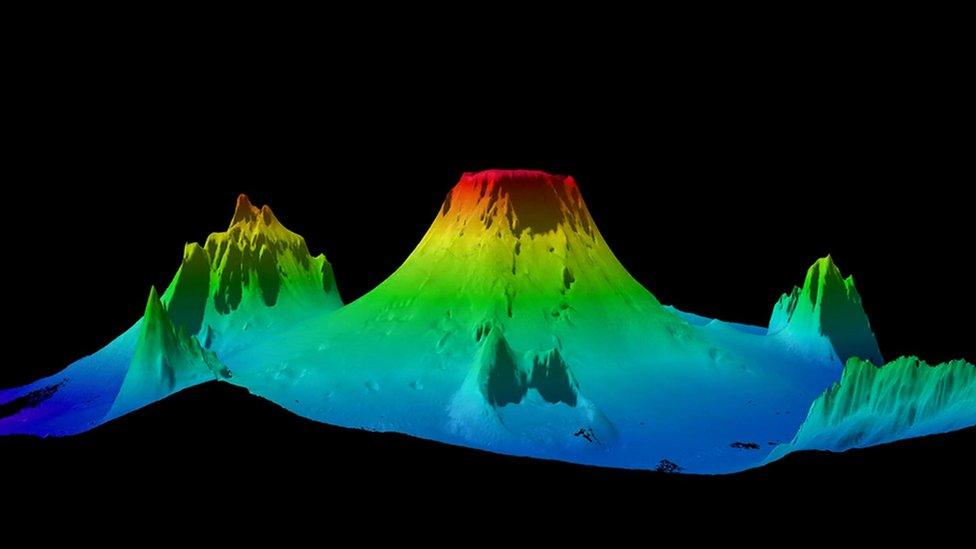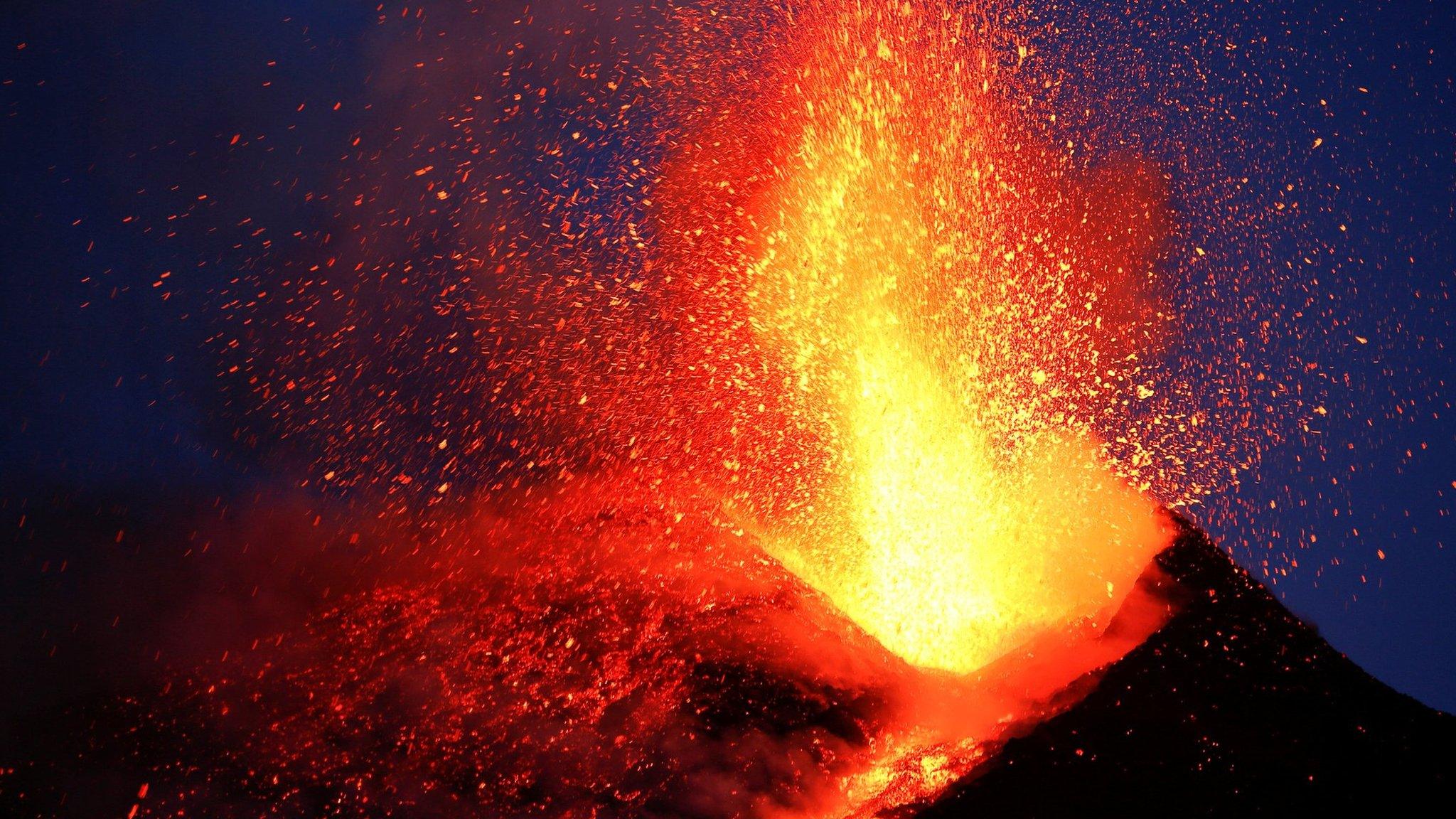Hawaii volcano: World's largest active volcano erupts
- Published
- comments

Lava flows from Mokuaweoweo Crater down Mauna Loa"s northeast rift
The largest active volcano in the world has just blown its top!
Residents of Hawaii's Big Island have been placed on high alert and been warned about the risk of falling ash, but there are no communities at immediate risk of danger.
"These lava flows rarely present a risk to life, but they can be extremely destructive to infrastructure," said Dr Jessica Johnson, a British volcano geophysicist.
Mauna Loa last erupted in 1984.
'The situation could change rapidly'

Mauna Loa, located inside Hawaii Volcanoes National Park, covers half of the US state's Big Island
Emergency officials say that at this stage no evacuations are necessary and populated areas are unlikely to be affected.
The lava flows are currently confined to an area below the summit where no one lives, but it is being monitored closely.
The US Geological Service (USGS) said that based on past events "the early stages of a Mauna Loa eruption can be very dynamic and the location and advance of lava flows can change rapidly."
If the eruption migrates beyond the walls of the summit caldera, lava flows could "move rapidly downslope," it added.
Calderas are hollows that form beneath the summit at the end of an eruption.
The volcano first erupted on Monday morning (UK time). Experts had previously warned that an eruption was possible following a series of earthquakes that had been recorded, including more than a dozen tremors on Sunday alone.
Earthquakes can trigger volcanoes that are known to be active and in this case, the experts monitoring the region were correct.
According to the USGS, Mauna Loa has erupted 33 times since 1843, when records were first made. When it last erupted in 1984 - almost 40 years ago - the population of Hawaii's Big Island was a lot smaller.
The Big Question: Why do volcanoes actually erupt?
It has doubled since then, to about 200,000 people, so island officials are warning it could pose a bigger threat to island residents if lava flows shift dramatically.
These flows can emit volcanic gasses which may cause breathing difficulties, so officials will continue to monitor the situation closely and take steps to evacuate any residents if necessary.
- Published22 November 2022

- Published16 April 2021

- Published1 May 2024

